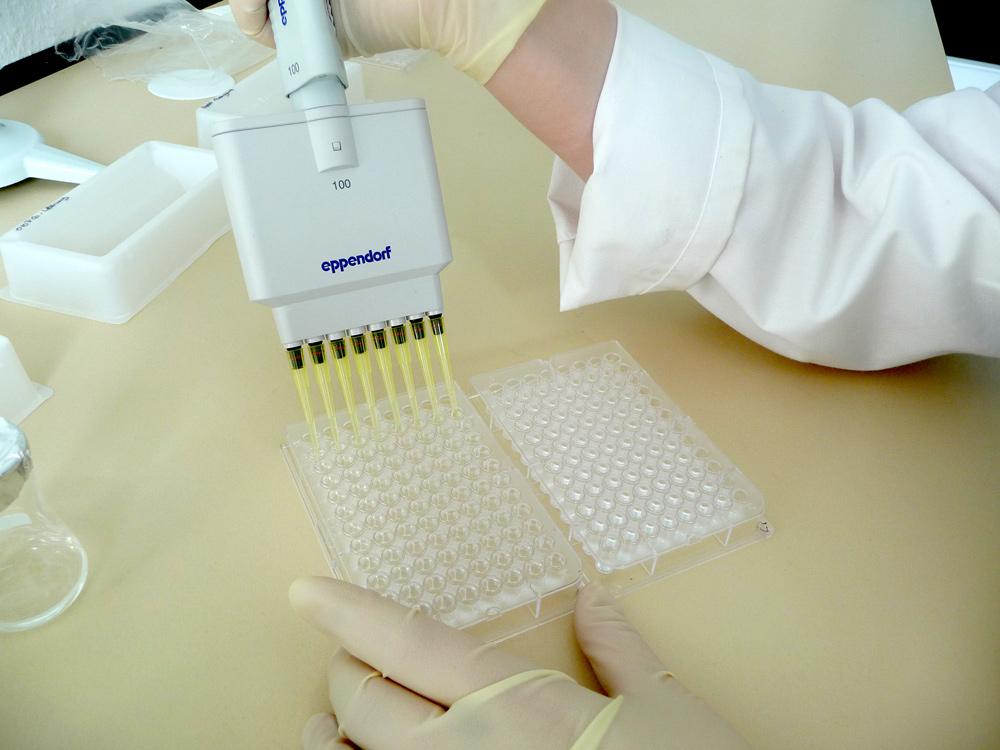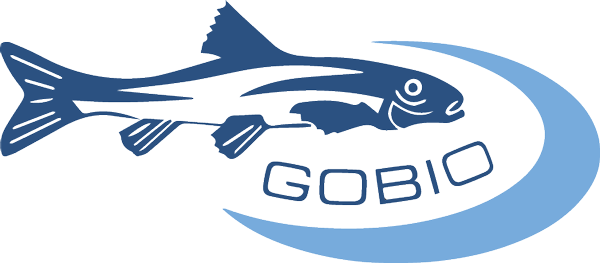Biological degradation tests are used to determine the mineralizability of foreign substances in the water cycle and thus to prevent the accumulation of persistent substances/metabolites (e.g. surfactants) in the environment.
In addition, degradation tests are used to detect (eco)toxic degradation products. This is done by coupling degradation tests with biological test procedures.
Until 2005, it was only possible to record toxic effects as a sum parameter using the fish test in accordance with DIN 38412-L31 as an animal test. The fish test is carried out with gold orfe and was prescribed in the Wastewater Ordinance until 2004. This procedure is a notifiable animal experiment that may only be carried out with treated wastewater.
In the meantime, an animal-free test system has been established with the fish egg test according to DIN 15088-T6, which has replaced the fish test since January 2005.
It is therefore no longer necessary to generate degradation products from e.g. leachate or process wastewater in model wastewater treatment plants (e.g. according to OECD 303) in order to fulfill the legal animal welfare requirements (exposure of vertebrates only to treated wastewater).
It can be assumed that the degradation products generated in the Zahn-Wellens test largely correspond to those of the model sewage treatment plant. The vertebrate toxicity of the degradation products can now be determined using the fish egg test.
Laboratory wastewater treatment plants
Various methods can be used to determine the biodegradability of pollutants:
This test method uses activated sludge from wastewater treatment plants and synthetic wastewater to test biodegradability and elimination. Activated sludge and other test parameters are used to stimulate the biological stages of wastewater treatment plants. The test method is based on OECD 303A (Coupled Unit Tests), DIN 38412-L26.
In the past, model sewage treatment plants were used to simulate the degradation process with the aim of checking whether octoxic pollutants are still present in the treated wastewater.
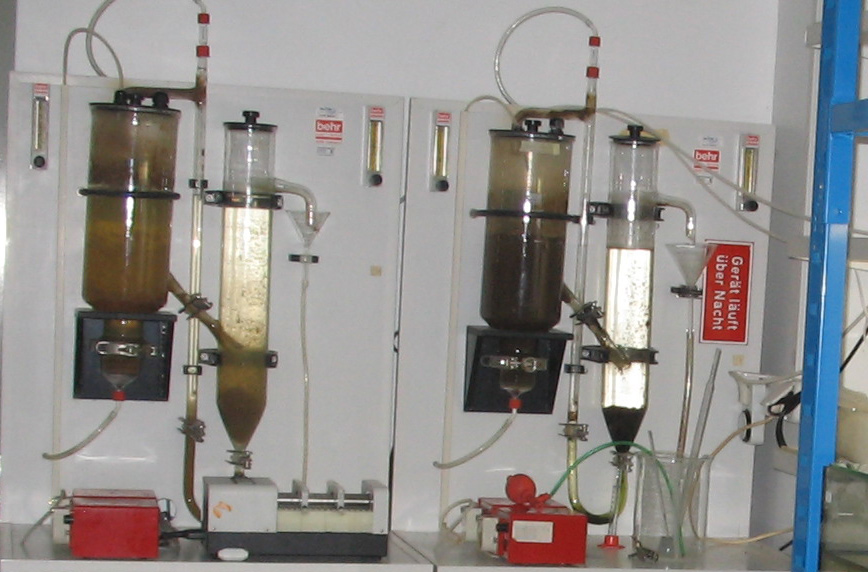
Zahn-Wellens test
The procedure according to EN ISO 9888-L25 1999-11 (issue status) / OECD 302 B is used to determine the elimination and complete biodegradability of water-soluble organic substances or wastewater constituents by aerobic microorganisms. It is tested whether the content of soluble organic substances (DOC) in a test concentration of 400 mg/L at the start of the test is biodegraded or eliminated over a period of 7-21 days. For this purpose, inorganic nutrient salts and sewage sludge (inoculum) from a wastewater treatment plant are added to the sample. The choice of inoculum in chemical testing is based on the intended use of the substance or mixture of substances. As a rule, these are municipal wastewater treatment plants. In the wastewater management of industrial plants, process water or partial flows are used with inoculae from the respective industrial wastewater treatment plant or, in the case of indirect dischargers, from the receiving municipal wastewater treatment plant, depending on the discharge situation. The test can also be used to detect a possible impairment of degradation performance by the test material. For this purpose, model substances or substance mixtures are added to the sample and the decrease in DOC is determined over a period of 7-21 days.
The detection of toxic effects of the degradation products as sum parameters can be carried out using bioassays.

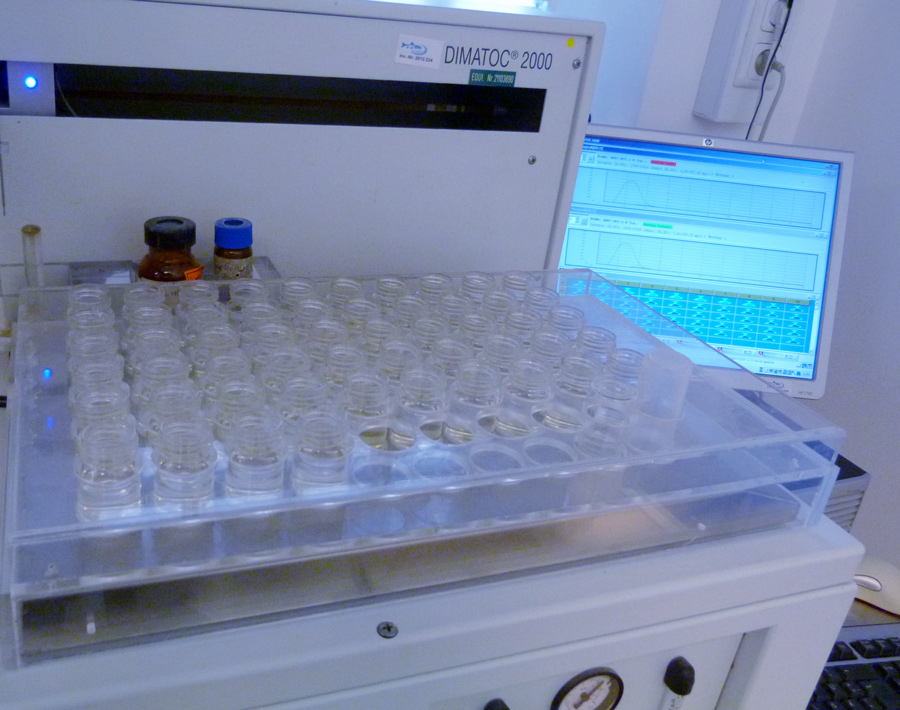
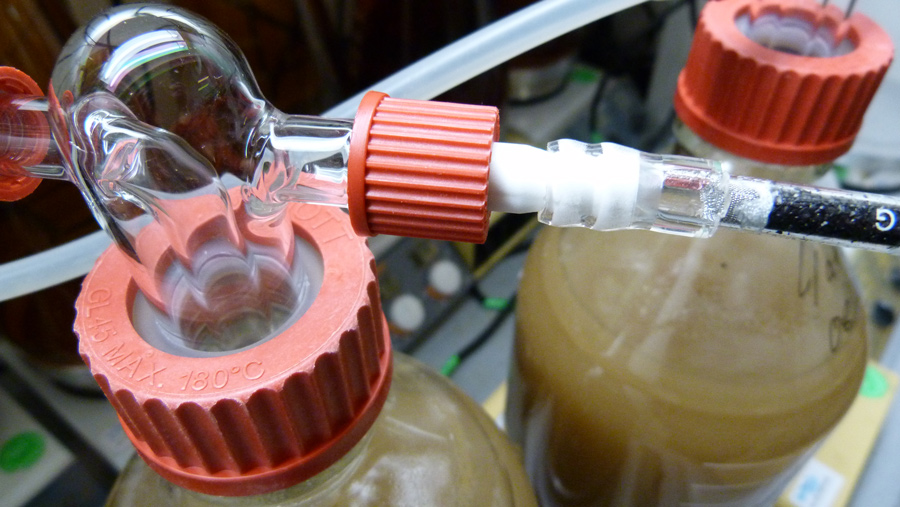
Nitrification inhibition test
The nitrification inhibition test according to DIN EN ISO 9509 L38 (issue status) records effects on the process of nitrification, i.e. the oxidation of the toxic wastewater constituent ammonia to nitrate. The effect of the test material on the conversion capacity of an inoculum from an industrial or municipal wastewater treatment plant is investigated, depending on the question.

Growth inhibition test with Pseudomonas putida
With this procedure according to DIN EN ISO 10712-L8 1996-02, the effect of wastewater constituents on the growth of bacteria is measured. The method is used to record the negative effects of discharges on the biocoenosis and functionality of wastewater treatment plants. The bacterium Pseudomonas putida is used as a representative for heterotrophic microorganisms in fresh water.
We only offer this procedure as a special examination as part of non-accredited services.
